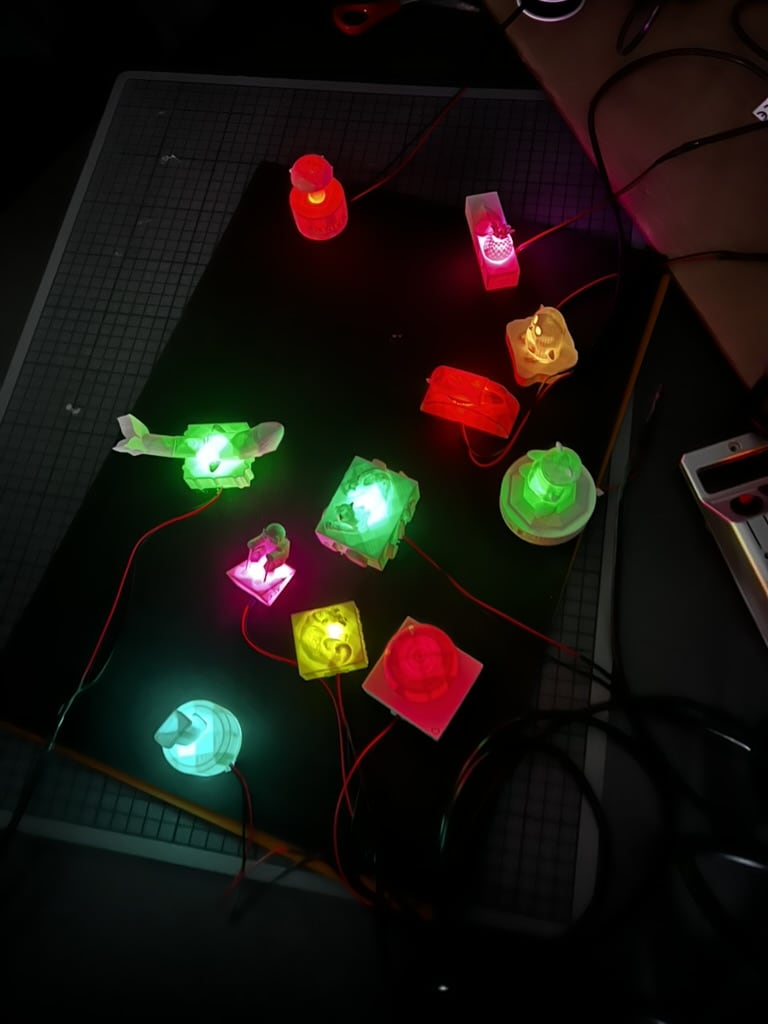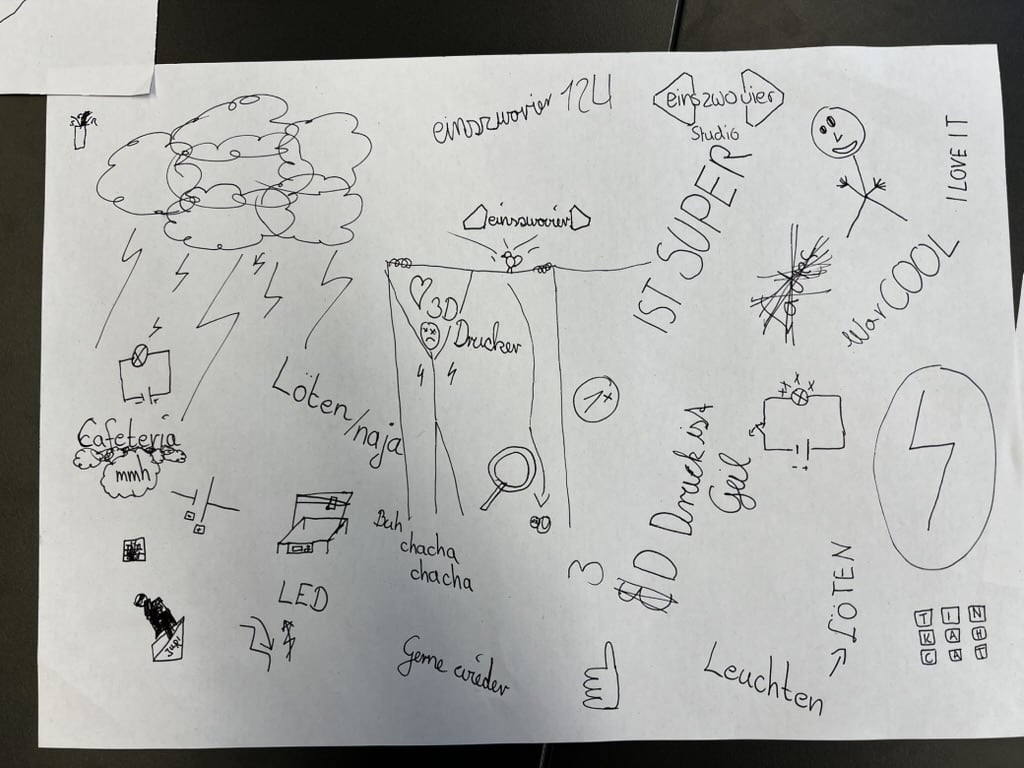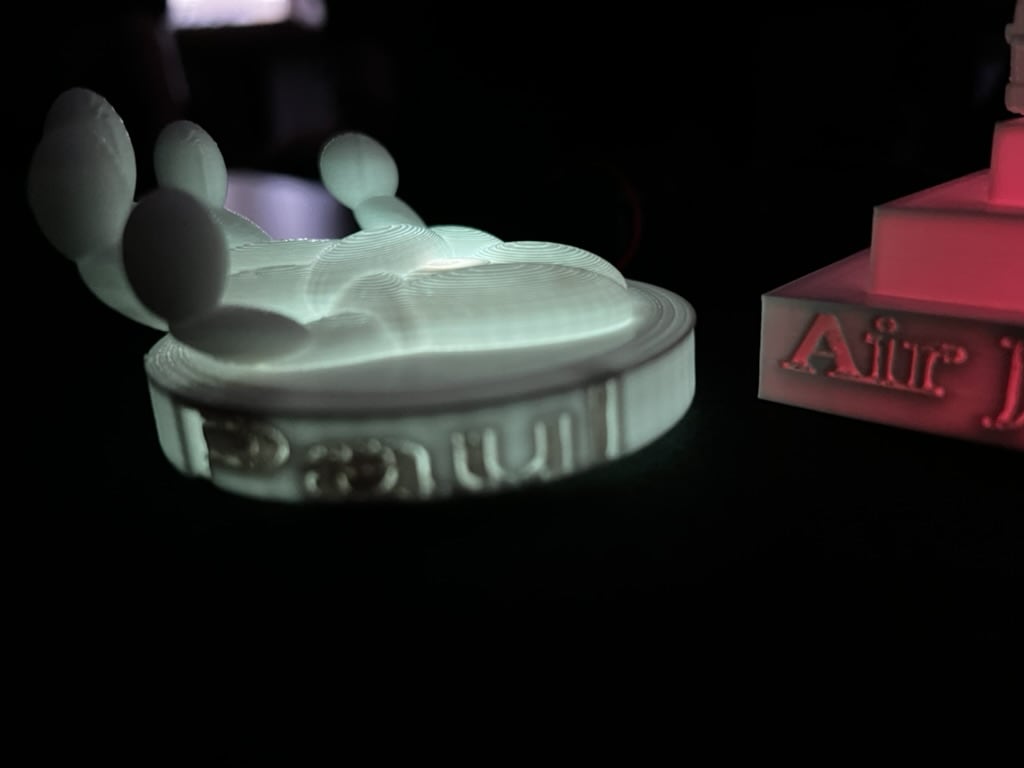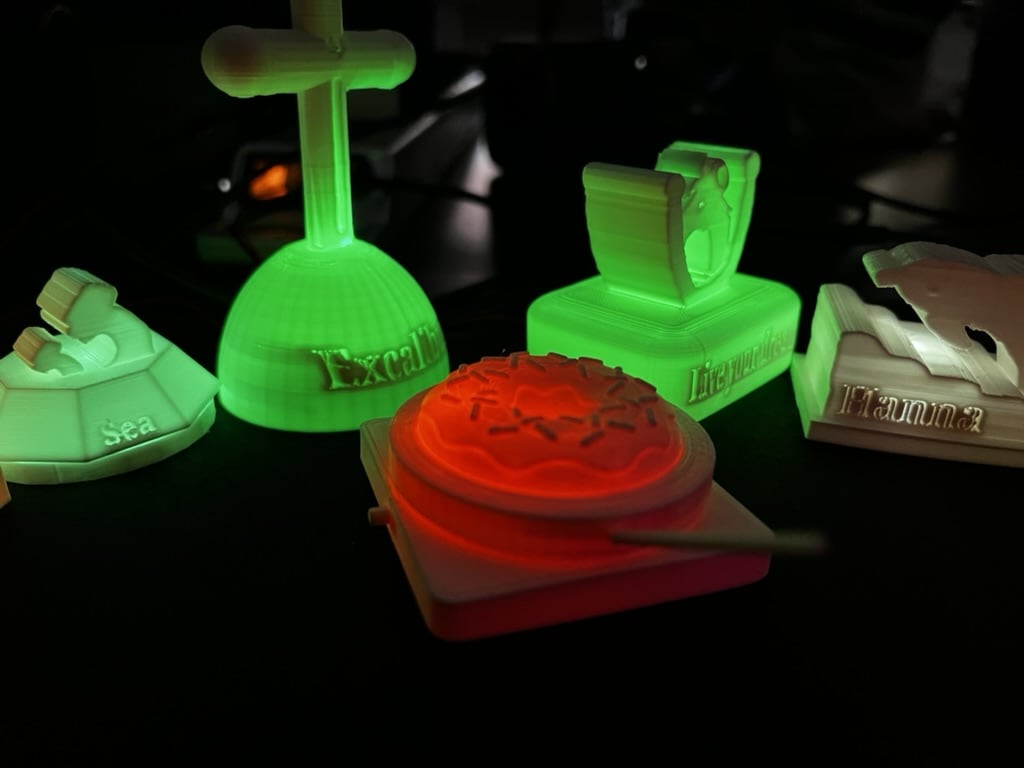einszwovier: löten und leuchten
By Aron Petau and Friedrich Weber Goizel • 5 minutes read •
Löten und Leuchten
A hands-on course in soldering, electronics, and lamp design for young creators
Löten und Leuchten has now run in three successful iterations — each time offering 5th and 6th graders a guided yet exploratory dive into the worlds of electronics, making, and digital design. At its core, the course is about understanding through creating: introducing young learners to tangible technologies and encouraging them to shape the outcome with their own ideas and hands.
The Project
Over three sessions (each lasting three hours), participants designed and built their own USB-powered LED lamp. Along the way, they soldered electronic components, modeled lamp housings in 3D, learned about light diffusion, and got a direct introduction to real-world problem solving. Every lamp was built from scratch, powered via USB — no batteries, no glue kits, just wire, plastic, and a bit of courage.
The children began by learning the basics of electricity through interactive experiments using the excellent Makey Makey boards. These allowed us to demonstrate concepts like conductivity, input/output, and circuitry in a playful and intuitive way. The enthusiasm was immediate and contagious.
From there, we moved to the heart of the project: cutting open USB cables, preparing and soldering 5V LEDs, and designing enclosures for them. The soldering was always supervised, but each child did their own work — and it showed. There's something deeply satisfying about holding a working circuit you assembled yourself, and many kids expressed how proud they were to see their light turn on.
Designing with Tools — and Constraints
For 3D modeling, we used Tinkercad on iPads. While the interface proved very accessible, we also encountered its limits: the app occasionally crashed or froze under load, and file syncing sometimes led to confusion. Nonetheless, it provided a gentle, well-mediated entry point to CAD. Most kids had never touched 3D design software before, but quickly began exploring shapes, tolerances, and fitting dimensions. The lamps they created weren’t just decorative — they had to functionally hold the electronics, which added a very real-world layer of complexity.
The printed shades were all done in white PLA to support light diffusion. This led to organic conversations around material properties, translucency, and light behavior, which the kids quickly absorbed and applied in their designs.
Real Challenges, Real Thinking
The project hit a sweet spot: it was challenging enough to be meaningful, but achievable enough to allow for success. Every child managed to finish a working lamp — and each one was different. Along the way, they encountered plenty of design hurdles: USB cables that needed reinforcement, cases that didn't fit on the first try, LEDs that had to be repositioned for optimal glow.
We didn't avoid these issues — we embraced them. Instead of simplifying the process to a formula, we treated every obstacle as an opportunity for discussion. Why didn't this fit? What could we change? How do you fix it? These moments turned into some of the richest learning experiences in the course.
Bonus Round: Tabletop Foosball
As a closing challenge, each group designed their own mini foosball table, using whatever materials and approaches they liked. This final task was light-hearted, but not without its own design challenges — and it served as a great entry into collaborative thinking and prototyping. It also reinforced our goal of learning through play, iteration, and autonomy.
Reflections
Across all three runs, the workshop was met with enthusiasm, curiosity, and real focus. The kids were engaged from start to finish, not just with the tools, but with the ideas behind them. They walked away with more than just a glowing lamp — they gained an understanding of how things work, and a confidence that they can build things themselves.
Bonus Round: Tabletop Foosball
As a closing challenge, each group designed their own mini foosball table, using whatever materials and approaches they liked. This final task was light-hearted, but not without its own design challenges — and it served as a great entry into collaborative thinking and prototyping. It also reinforced our goal of learning through play, iteration, and autonomy.
Reflections
Across all three runs, the workshop was met with enthusiasm, curiosity, and real focus. The kids were engaged from start to finish, not just with the tools, but with the ideas behind them. They walked away with more than just a glowing lamp — they gained an understanding of how things work, and a confidence that they can build things themselves.
For us as facilitators, the course reaffirmed how powerful hands-on, self-directed learning can be. The combination of digital and physical tools, real constraints, and open-ended outcomes created an environment where creativity thrived.
Löten und Leuchten will continue to evolve, but its core will remain: empowering kids to build things they care about, and helping them realize that technology isn’t magic — it’s something they can shape.






